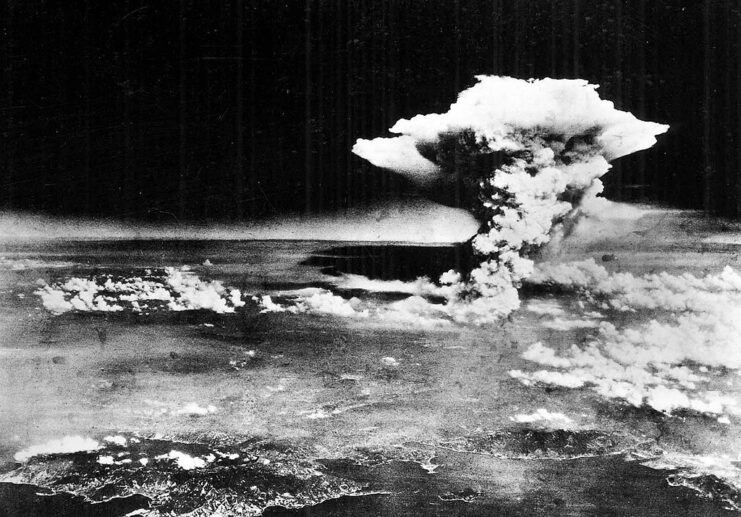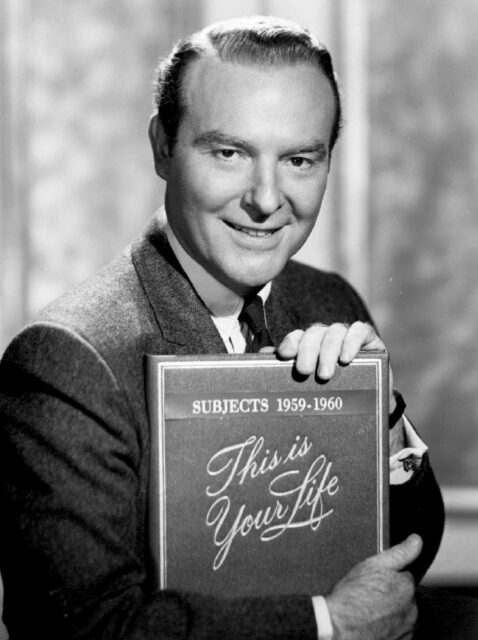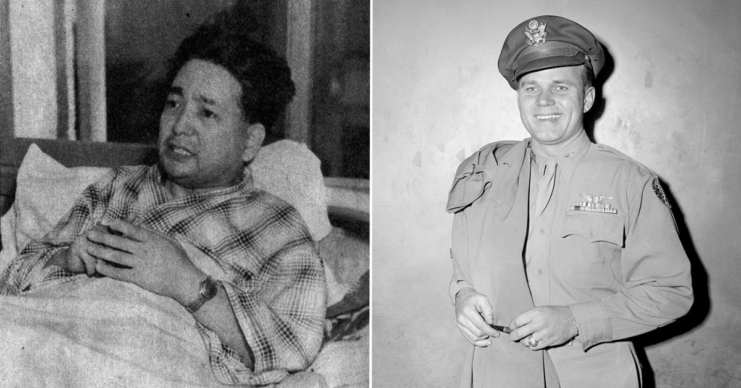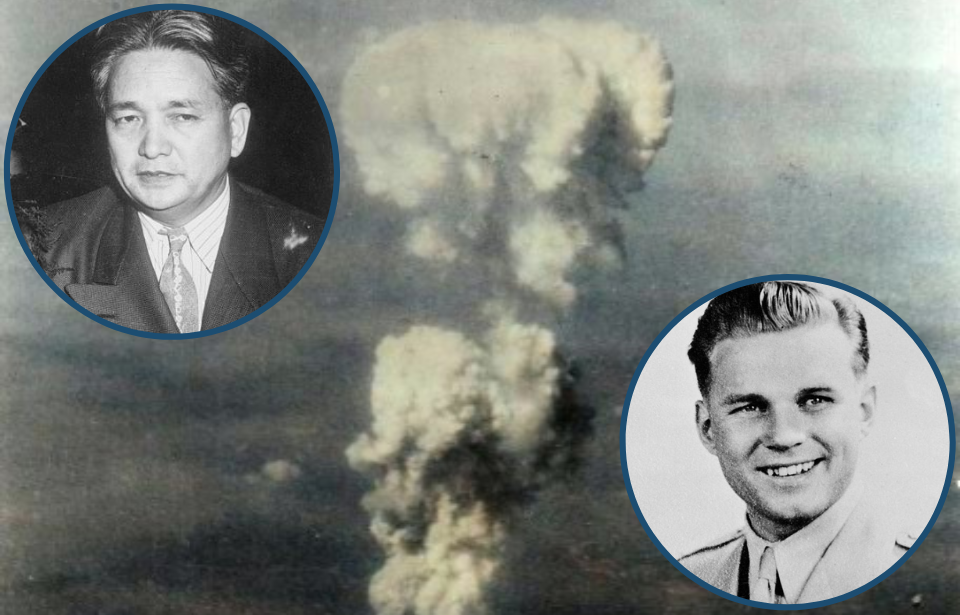Rev. Kiyoshi Tanimoto was one of the lucky ones to survive the atomic bombing of Hiroshima by the United States on August 6, 1945. Following the Second World War, he dedicated his life to speaking about what he experienced, using his profile to raise money for a peace center in the Japanese city and for the Hiroshima Maidens, women who’d suffered injuries as a result of the unprecedented attack.
In 1955, Tanimoto came face-to-face with Capt. Robert A. Lewis, the co-pilot of the Boeing B-29 Superfortress Enola Gay – the bomber that dropped Little Boy on Hiroshima.
Atomic bombings of Hiroshima and Nagasaki

The atomic bombings of Hiroshima and Nagasaki not only put an end to the Second World War, they signaled the beginning of the nuclear age. Developed through the work conducted as part of the Manhattan Project, under theoretical physicist J. Robert Oppenheimer, the explosives produced an insurmountable death toll and caused widespread devastation.
On August 6, 1945, the B-29 Superfortress Enola Gay, piloted by Col. Paul Tibbets, dropped the atomic bomb Little Boy over Hiroshima, destroying five square miles and causing an estimated 135,000 casualties, according to the Atomic Archive: 66,000 dead and another 69,000 wounded.
Three days later, on August 9, the B-29 Superfortress Bockscar, piloted by Maj. Charles W. Sweeney, dropped a second nuclear device, Fat Man, over Nagasaki. Detonating 1,650 feet over the city, it caused around 64,000 casualties, with 39,000 reported dead and another 25,000 wounded.
Less than a week later, Japanese Emperor Hirohito made a radio broadcast, now known as the Jewel Voice Broadcast, in which he announced the country’s surrender. It was signed on September 2, 1945 aboard the American battleship USS Missouri (BB-63) by Japanese and Allied officials.
This Is Your Life

This Is Your Life (1948-52, 1952-61) first began as a radio show, before moving to television in 1952. Hosted by Ralph Edwards and broadcast by NBC, the premise was to present “the life stories of entertainment personalities and ‘ordinary’ people who had contributed in some way to their communities.” This was done with the help of co-workers, friends and family members.
Over the course of its run, This Is Your Life played host to a number of notable guests. Prohibition-era singer and actress Lillian Roth admitted to her near two-decade struggle with alcohol while on the show, and Vincent Price made a surprise appearance on an episode. A survivor of the atomic bombing of Hiroshima, Kiyoshi Tanimoto, also agreed to participate in an episode, where he was introduced to Robert A. Lewis, the co-pilot of the Enola Gay.
Over the course of its run, This Is Your Life was nominated for a number of Emmy Awards, and overall was well-received by audiences. In fact, TIME magazine once wrote that it was “the most sickeningly sentimental show on the air.”
Hiroshima survivor meets Enola Gay co-pilot
As aforementioned, one episode of This Is Your Life saw Hiroshima survivor Kiyoshi Tanimoto meet Robert A. Lewis. Filming took place on May 11, 1955, and while the reverend had agreed to appear on the show, he wasn’t aware that he’d be coming face-to-face with the Enola Gay‘s co-pilot.
At the time, Tanimoto was in North America with the 25 Hiroshima Maidens, who were to undergo reconstructive surgery at Mount Sinai Hospital. The reverend believed he would be interviewed about their experiences.
Lewis was introduced to Tanimoto and viewers in silhouette. In this state, he said, “At 0600, on the morning of August the 6th, 1945, I was in a B-29 flying over the Pacific. Destination: Hiroshima.” As host Ralph Edwards continued to discuss the scene in Hiroshima on that fateful day, Tanimoto grew more uneasy, surely aware of what was about to happen.
Lewis and the reverend shook hands upon meeting, with the latter struggling to make eye contact with the man who suffered the atomic wrath of Little Boy. Tanimoto was rather stiff as Lewis recounted his experience that day. When the veteran went to leave, he, once again, shook hands with Tanimoto. This time, however, something had changed, with both showing a bit more warmth toward each other.
The episode ended with Edwards recounting the reverend’s life following the bombing, after which two of the Hiroshima Maidens came on stage. Money was presented to them for a medical fund, with Lewis reappearing to give “the first contribution” – $500 USD.
Kiyoshi Tanimoto kept in contact with Robert A. Lewis

According to Kiyoshi Tanimoto’s daughter, the reverend remembered his appearance on This Is Your Life. He’d share the episode with English-speaking guests at his residence, and wound up keeping in contact with Robert A. Lewis via letter correspondence.
As for Lewis, he never forgot the atomic bombing of Hiroshima. He recounted the entire day in a log, which was completed just prior to his death on June 18, 1983. He’d also met with another survivor, Hubert Schiffer, a German man who was eight blocks from the epicenter of the detonation.
More from us: North American B-25 Mitchell: The Most Produced American Medium Bomber of World War II
Following the Second World War, Lewis became a sculptor, with one of his pieces – ‘God’s Wind’ at Hiroshima? – depicting a mushroom cloud.
